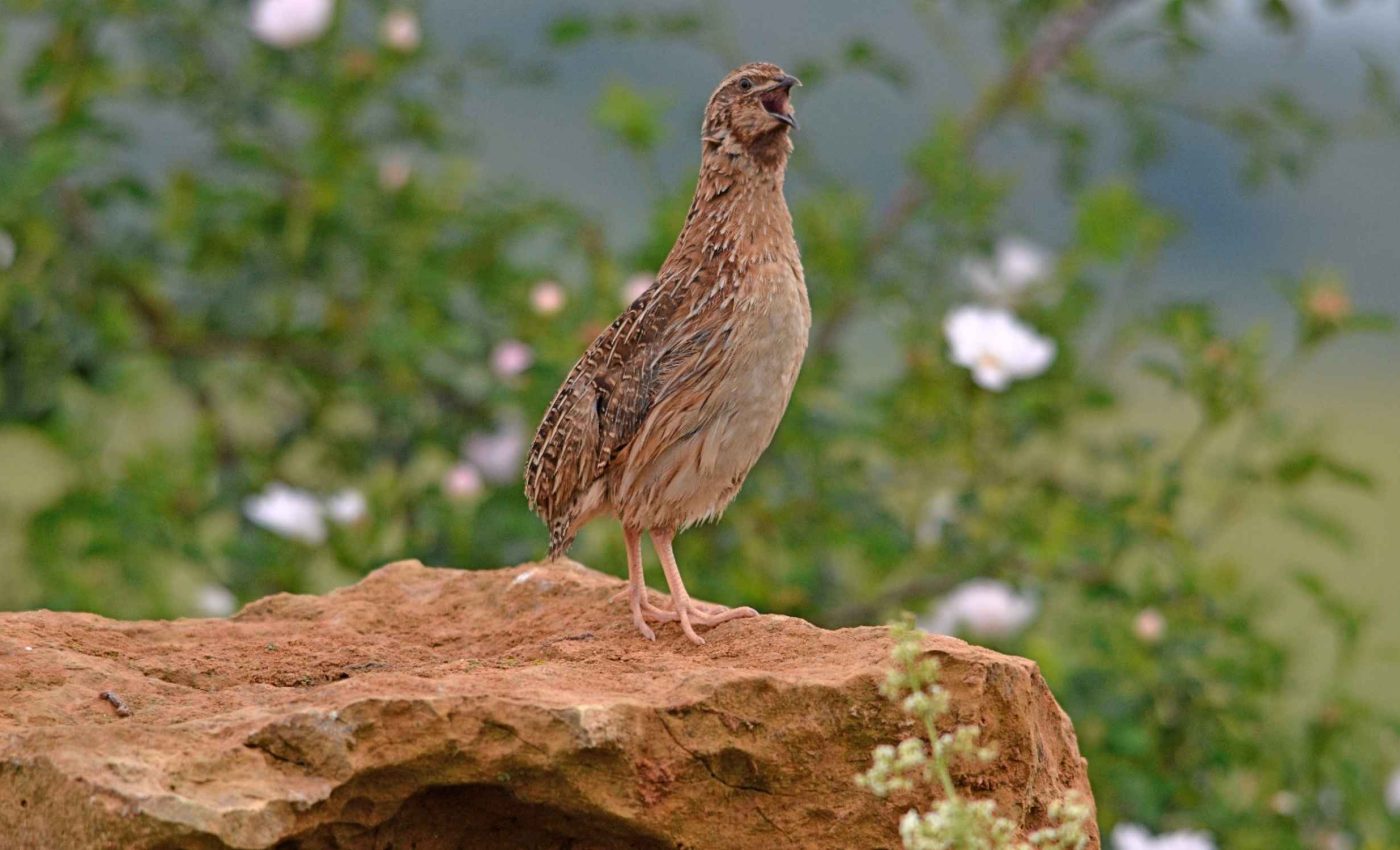
Small bird equipped with GPS surprises scientists by flying over 1,400 miles
A small quail bird left central Spain and reached Berlin in only a few days. The trip covered about 1,430 miles, tracked by a GPS tag hardly heavier than a paper clip.
Another tagged quail chose a different route along the Mediterranean coast before stopping south of Paris. These quick flights show that this familiar farmland bird has far more range than many assumed.
Vanishing quail habitats
The common quail is built for short takeoffs, yet it migrates at night and rides favorable winds. Its compact body and rapid wingbeats trade glamour for grit.
The work was led by Fundación Artemisan, a Spanish wildlife research nonprofit based in Ciudad Real. Its team focuses on applied conservation and sustainable hunting for farmland birds.
Quail movement also shifts with people and cities. One recent study analyzed long-term tree ring recoveries and found that modern urban growth and farm changes shape when and where quail move.
“While human population and economic growth have shown a linear increase, quail recovery rates exhibit a U shaped trajectory,” wrote Nadal and colleagues, the authors of the 2024 analysis.
Tracking quail with GPS
In 2025, field teams tagged several quail near Ciudad Real with tiny GPS units. One bird crossed eastern Spain overnight, moved through southern France, paused near Paris, and then kept going until it reached Berlin.
“The quail’s movement holds the key to its survival, but until now we lacked precise data,” explained Eduardo Laguna, the Artemisan researcher coordinating these tests.
Another.GPS- tagged quail skirted the Mediterranean, passed Montpellier, and settled near the south of Paris.
To place these tracks in context, scientists still rely on ring recovery, a report of a banded bird found later. A 2022 paper mapped recoveries across western Europe and showed how man-made obstacles can reshape routes.
Those long recoveries, combined with the new GPS points, reveal flexible paths. They also help identify pinch points where collisions or habitat loss could matter most.
How the project counts quail
This work sits inside a large citizen effort called the Coturnix Project. Citizen science, volunteers collecting standardized data, is the backbone of its counts and wing collections across Spain.
Artemisan’s latest project report lists 2,865 roadside transects from 2020 to 2024 and 2,357 broadcast listening stations during the breeding seasons. It also tallies 9,674 hunting days reported and 278 banded birds recovered.
Volunteers and staff collected 49,140 quail wing samples to estimate sex and age ratios of hunted birds. Those ratios point to populations producing seasonal surpluses in all Spanish bioregions during the project window.
GPS and quail breeding season
Spain is now standardizing a specific monitoring method, a set of repeated counts with capture during the breeding season. The method samples calling males at fixed points on a weekly schedule for several months.
That protocol, called the specific monitoring method or SEC, builds density estimates and maps where males gather.
An earlier article documented the approach in Atlantic range countries and tied it to management decisions.
SEC was deployed in 18 study areas in 2023 and 2024, with higher male densities at higher elevations and in the north compared with the south in that time frame.
SEC results also showed that adult male density dipped as the season advanced, while juvenile male density rose later in summer.
SEC complements the app based tool that logs transects and passive observations.
Using both, the team detected a slight but significant density dip in Extremadura between 2022 and 2024, while national kilometer indices stayed fairly stable overall.
How farms and water shape flights
Quail favor open cereal fields with scattered cover. They feed and breed where crops and stubble create space and seeds.
Water availability matters too. Birds in irrigated agriculture, fields watered by human built systems, move less because food and cover last longer into summer.
By contrast, birds in dryland fields change sites more often as plants dry out. The Berlin flight fits that picture of adaptable, fast decisions under shifting conditions.
Climate pressure and crop timing can compress breeding and push birds to roam. Tracking now reveals those responses in days rather than years.
Policy and hunting
Spain’s national counts show no sharp trend in breeding season abundance from 2021 to 2024. That stability, along with strong juvenile ratios, can support managed hunting when seasons and quotas match the data.
These numbers also help reduce risk from harvest machines during peak nesting. Timed mowing and refuge strips help, and the data point to where they matter most.
The project depends on hunters, landowners, and regional federations. That shared record keeping is unusual in scale for a small game bird.
The SEC data, the GPS points, and the wing archive together form a modern baseline. Managers can now adjust rules with evidence rather than guesswork.
Lessons from quail GPS tracking
Spain has long battled releases of farm quail that are not pure common quail. Introgression, gene flow from one species into another, can alter behavior, including migration drive.
A research found that most game farm birds tested were hybrids with Japanese quail ancestry. That result underscored why screening farmed stock and halting risky releases protect wild traits.
Hybrid birds may be less likely to undertake long migrations. They can also dilute signals in monitoring if mixed into local populations.
Spain’s wing archive and band reports offer a way to spot problems early. If managers pair genetics checks with SEC counts, they can keep the signal clear.
—–
Like what you read? Subscribe to our newsletter for engaging articles, exclusive content, and the latest updates.
Check us out on EarthSnap, a free app brought to you by Eric Ralls and Earth.com.
—–













